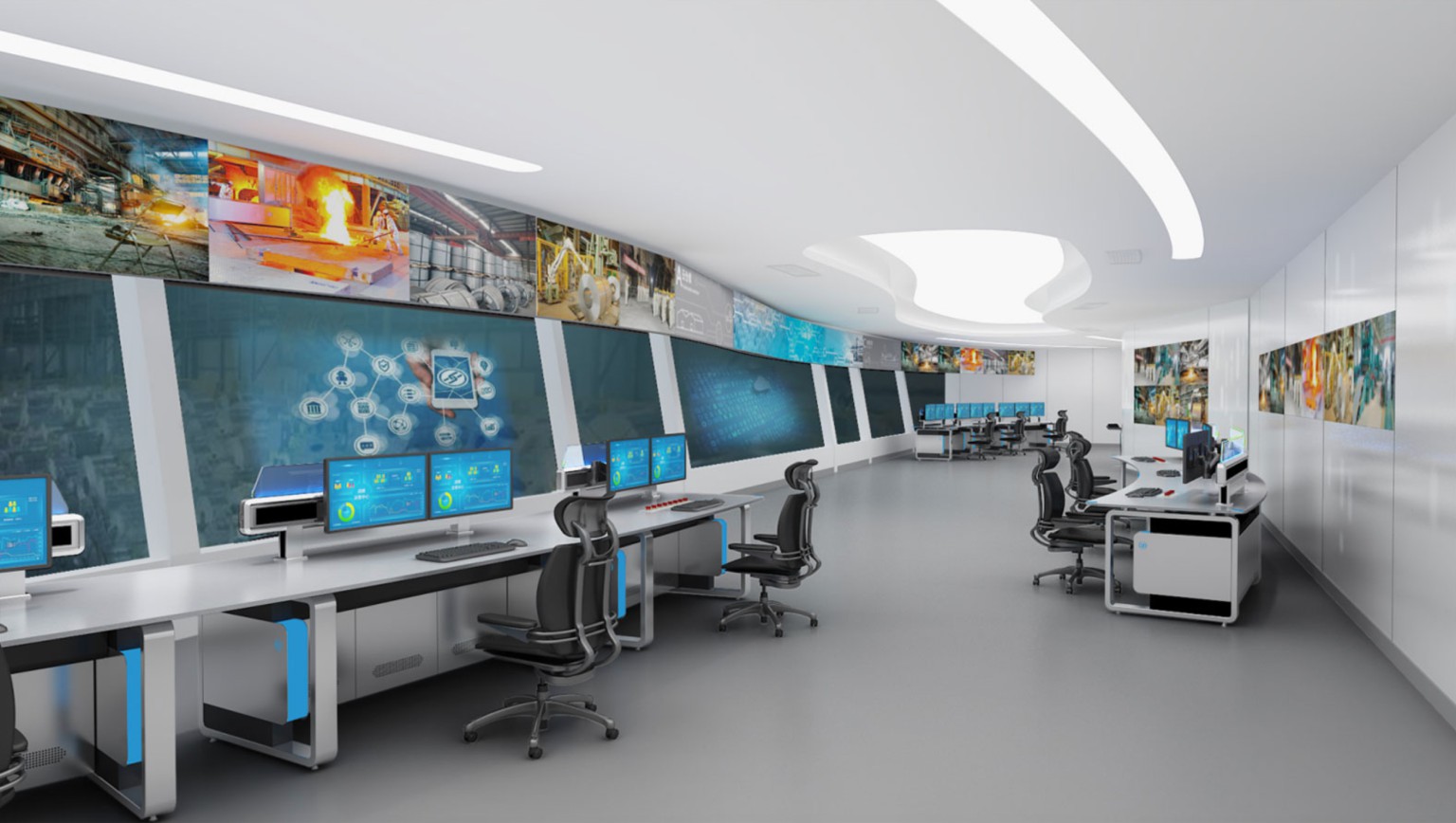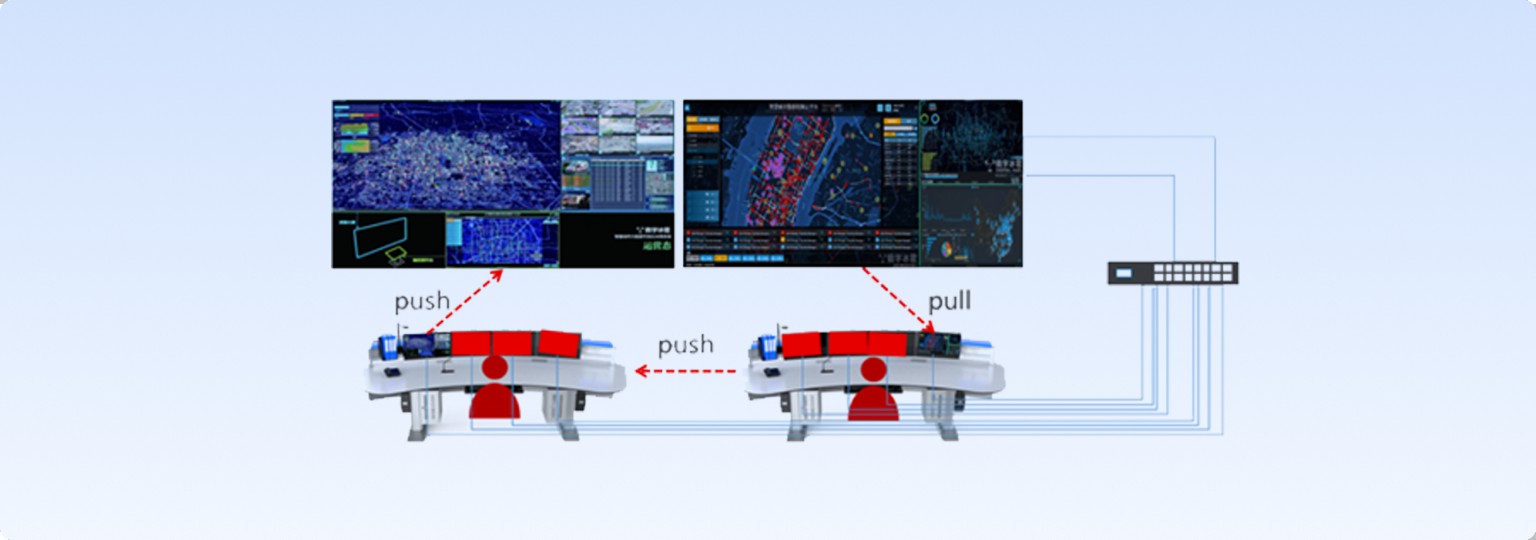












Smart energy represents a new form of energy industry development that deeply integrates the internet with energy production, transmission, storage, consumption, and the energy market. It is characterized by intelligent equipment, multi-energy coordination, information symmetry, decentralized supply and demand, flat system structure, and open transactions. By breaking away from traditional constraints, we have developed a "smart energy" management platform that provides comprehensive integration and three-dimensional, transparent control. This platform integrates a five-dimensional space encompassing "sound, light, electricity, sensing, and control," enabling informatization and scientization in data acquisition, production scheduling, and decision-making. It accomplishes real-time automated data acquisition, high-speed networked transmission, standardized integration, three-dimensional visual simulation, automated operation, and intelligent decision-making. This results in visualization, automation, and intelligence in the management processes of energy-producing enterprises such as coal mines and steel plants.

Through a 10-Gigabit optical fiber switching network, it provides lossless pixel-to-pixel transmission, supporting images with a maximum resolution of 4096*2160 at 60 frames per second and 4:4:4 chroma sampling. This ensures crisp text and smooth visuals, with a maximum bandwidth usage of 8Gbps. For 4:4:4 sampling standards at 1080p@60 and 4K@30, there is no compression processing, guaranteeing that signal sources are accessed without any secondary encoding or decoding loss, achieving high-quality, lossless restoration.

The lossless SDVOE solution, combined with advanced H.264 encoding algorithm mixed networking technology, allows a single node device to simultaneously transmit multiple streams over a 10Gbps optical fiber network. This not only fulfills the requirements for high-definition, low-latency, high-quality signal restoration but also accommodates the needs for low-bitrate display and control in visual monitoring and remote transmission scenarios. The distributed node box is equipped with 4K@60 loop-out interfaces, capable of satisfying signal preview and lossless signal extension transmission functions.

Using the lossless compression algorithm Ti-2, which preserves the original image information intact, the system adaptively adjusts to the bandwidth of the optical fiber network for high-speed transmission at the board and chip level. With a row synchronization mechanism, the point-to-point delay is approximately 50~100 microseconds. The signal source is encoded at the input node, transmitted through the switch, and displayed on the screen by the output node. From the input node to the output node, the image transmission delay is ≤5ms. The signal source and decoded signal are displayed synchronously on the screen, with keyboard and mouse operations feeling as responsive as if they were local, without any lag, greatly enhancing the practicality and convenience of KVM keyboard and mouse operations.

Traditional distributed systems use lossy compression for graphics processing, which results in synchronization errors during signal splicing and cumulative system latency, affecting the signal restoration quality. By employing an integrated graphics processor, it is possible to directly decode audio and video signals from 10-Gigabit fiber-optic switches without loss. Combined with built-in traditional splicing cards, this achieves zero-latency splicing synchronization. Additionally, it can interface with the decoder of the surveillance platform to enable cross-network scheduling of surveillance video feeds.

The system can establish an operating environment with human-machine separation, allowing users to opt for placing all servers collectively in a machine room to meet a variety of needs. This setup offers a comfortable environment with human-machine separation for personnel on duty, enabling workstation staff to concentrate on operational tasks. By situating all servers in a machine room for centralized management and control, it facilitates maintenance work for IT operations personnel. With the separation of "humans" and "machines," important servers can be placed in a machine room or a secure, classified area, reducing the risk of losing critical data.

Adopting a hybrid networking architecture combining point-to-point and distributed connections, computer hosts can be directly connected to displays without relying on switches or management hosts. The system embeds management software so that failures in switches or management hosts will not affect KVM remote office applications on computers. Relying on the powerful individual performance of distributed node machines, signal distribution and transmission can be achieved, with synchronous transmission to the switching network, satisfying multi-functional applications such as cross-workstation invocation and large screen projection display.

The user interfaces for functions such as workstations, large screens, and central control within the system are all integrated into one software suite. In practical use, operators can complete tasks such as switching large screen signals, workstation control, and adjusting the indoor environment simply by dragging and dropping with a mouse. All software implementations and hardware constructions are achieved within a unified hardware structure and software interface, truly realizing an integrated display and control system that simplifies complexity.

Through comprehensive information sharing, collaboration between people and between people and devices is enhanced, improving operator efficiency. Information push between workstations facilitates mutual collaboration among different workstation personnel. Workstation personnel can push information to the video wall, achieving information sharing within a specific area. System data can be shared more broadly within and outside the domain, breaking down information silos.

During signal switching, it can achieve instantaneous switching without any intermediate transition states such as delay, black screen, blue screen, or flickering. When an operator needs to view or operate a server signal within their permissions, there is no need to wait; video and data information are displayed instantaneously. Similarly, seamless switching and display can be achieved on the video wall, ensuring a smooth viewing experience.

It supports large screen push and control functions. When a staff member encounters an issue, they can push the signal to the video wall for display or share it with other staff members for viewing. If modifications to the video wall layout are required, the control rights of the keyboard and mouse can be transferred from the staff member's display screen to the video wall, allowing for operations such as creating new windows, closing windows, and resizing windows directly on the video wall with the mouse. This truly integrates display and control.

Through the data transparent transmission function, signals from USB drives can be accessed into the system, enabling easy manipulation of USB drives and other removable storage devices. Access to the data transparent transmission function is granted through accounts, and administrators have the authority to disable this function for any account, ensuring the security and confidentiality of important data.

The system supports pre-saved scenarios, allowing on-duty personnel to easily switch modes by selecting pre-saved layouts, thereby reducing the burden of arranging layouts. Additionally, when on-duty personnel need to change their locations due to business requirements, they can simply enter their original username to retrieve previous scenarios and quickly resume their working state, enhancing work efficiency.

The system supports integration with business data systems and allows for the setting of alarm thresholds. When these thresholds are exceeded, automatic alarms are triggered. The system can be activated through data commands and supports one-click linkage for control actions. In the event of an alarm, it automatically prompts the next steps of operation, enabling rapid anomaly handling.

